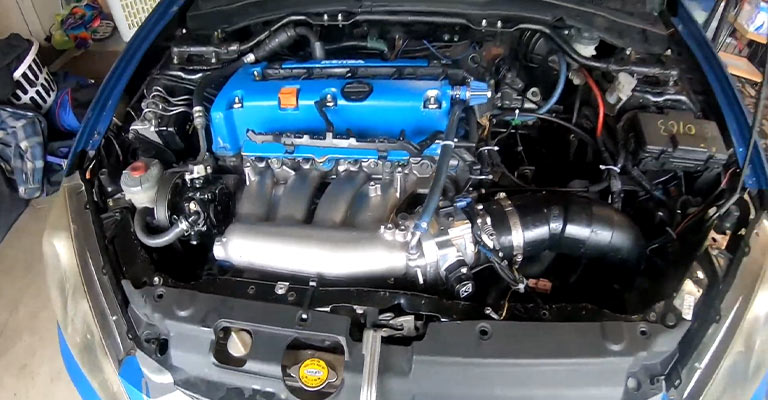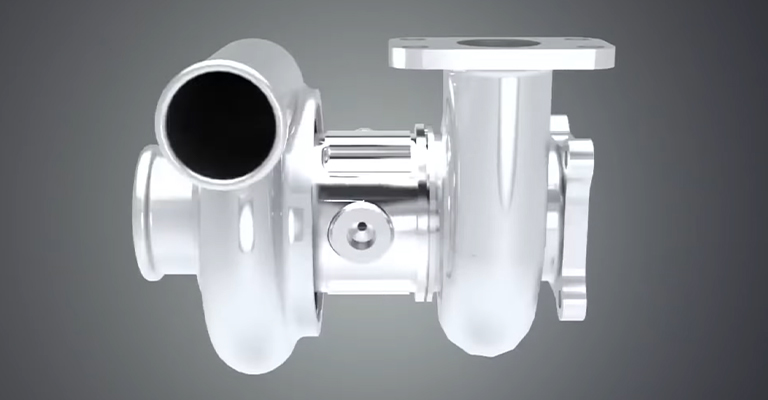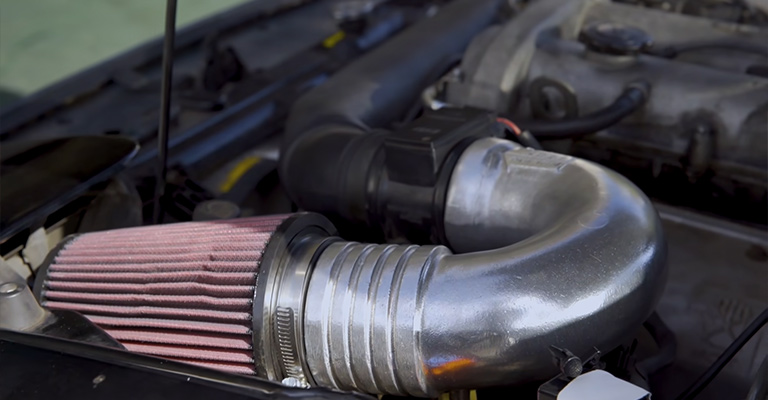A good intake system for your car can improve airflow and turbo lag, as well as boost power and efficiency.
It is important to make sure the intake system you select will work with your car’s engine type and other modifications you may have made.
Some intakes systems require access to certain tools or expertise in order to install them properly, so be aware of that before making a purchase.
Building a custom cold air intake of your very own is not as difficult as it sounds.
With the right materials and the right tools, you can customize your own intake to your exact specifications.
This guide will walk you through each step of the process, from selecting the right components to installing the intake in your car.
How To Build Your Own Custom Cold Air Intake
Building a custom cold air intake (CAI) for your vehicle can be a rewarding project, but it’s important to note that modifying your vehicle’s intake system may affect its warranty and emissions compliance.
Make sure to research and understand the regulations in your area before proceeding. Here’s a general guide to help you build a custom cold air intake:
Materials and Tools:
Piping: Select a high-quality, durable material for the intake pipe. Aluminum is a common choice due to its lightweight and corrosion-resistant properties.
Air Filter: Choose a high-flow performance air filter that fits your vehicle. Brands like K&N, AEM, and others offer a variety of options.
Couplers and Clamps: You’ll need silicone couplers and stainless steel clamps to connect the intake components securely.
Heat Shielding: To prevent hot engine air from entering the intake, consider using heat-resistant materials or adding a heat shield. Reflective heat tape or a metal heat shield can help.
Mass Air Flow (MAF) Sensor Adapter: If your vehicle has a MAF sensor, ensure you have an adapter to connect it to the new intake system.
Cutting and Shaping Tools: Depending on your vehicle, you may need tools like a hacksaw, pipe cutter, or tubing bender to shape and cut the piping.
Measuring Tools: Accurate measurements are crucial to ensure a proper fit. A tape measure and calipers can be helpful.
Safety Gear: Wear safety glasses and gloves when working with tools and materials.
Steps:
- Research your Vehicle: Understand the layout of your engine bay and the location of the existing air intake components.
- Remove the Stock Intake: Take out the stock air intake components carefully. This usually involves removing the airbox, tubing, and the air filter.
- Measure and Cut Piping: Measure the dimensions for your custom intake pipe. Use the cutting tools to shape the pipe according to your measurements.
- Install MAF Sensor: If your vehicle has a MAF sensor, install it in the new intake pipe using the appropriate adapter.
- Attach Couplers and Clamps: Connect the intake pipe to the throttle body and air filter using silicone couplers and stainless steel clamps. Ensure a secure fit by tightening the clamps sufficiently. Make sure all connections are snug to prevent any air leaks.
- Install Heat Shielding: If you’re using a heat shield, install it around the intake pipe to protect it from the heat generated by the engine. This will help maintain a cooler air temperature entering the intake.
- Secure the Air Filter: Attach the high-flow air filter to the end of the intake pipe. Ensure it is securely fastened and properly sealed to prevent debris from entering the engine.
- Check for Clearance: Ensure that the new intake system doesn’t interfere with other components in the engine bay. Check for proper clearance around moving parts, belts, and other nearby elements.
- Start the Engine: Start your vehicle and listen for any unusual noises or vibrations. Rev the engine a few times to check for proper airflow and any signs of issues.
- Monitor Performance: Keep an eye on your vehicle’s performance after installing the custom cold air intake. Pay attention to any changes in engine sound, throttle response, or fuel efficiency.
- Consider Professional Tuning: Modifying the intake system may alter the air-to-fuel ratio, affecting the engine’s performance. Consider consulting a professional tuner to optimize your vehicle’s ECU (engine control unit) for the new intake setup.
- Legal and Warranty Considerations: Before driving your vehicle with the custom cold air intake, check local regulations regarding vehicle modifications. Keep in mind that modifying the intake system may void parts of your vehicle’s warranty, and it’s essential to be aware of the potential implications.
- Regular Maintenance: Periodically inspect the custom cold air intake for any signs of damage, loose connections, or wear. Clean or replace the air filter as needed to maintain optimal performance.
Caution
Remember that building a custom cold air intake is a DIY project, and it’s crucial to approach it with caution and responsibility.
If you’re unsure about any aspect of the installation, consider seeking assistance from a professional mechanic or automotive expert.
Additionally, always follow safety guidelines and use proper protective gear during the installation process.
Why Build a Custom Cold Air Intake in The First Place?
By ensuring the engine receives as much cold, clean air as possible, you can improve the performance of your race car quickly and cheaply.
Many products on eBay or Amazon claim horsepower gains from simple intake tubes for almost every car. In some cases, the horsepower gains claimed by these products may be a bit optimistic.
Although we have conducted numerous chassis dyno tests, we have found that different air intake pieces have been successful.
Were we able to find 20 horsepower? We didn’t find power, but we went in the right direction.
Air intakes require only a few components. A hose clamp, silicone hoses, and aluminum pipes are all you’ll need.
A large portion of your air intake system will be made up of aluminum pipes that are connected together. The different aluminum pipe sections will be connected with silicone couplers.
The performance of the intake will be greatly enhanced by securing the couplers and aluminum pipes together.
High-quality stainless steel is used in the manufacture of stainless-steel worm drive hose clamps.
Improves Airflow Under the Hood and Into The Engine
You can improve airflow under your hood and into the engine by building a custom cold air intake. It’s a simple process that will increase horsepower and fuel economy in your car or truck.

The right intake can also enhance the sound of your engine when you’re driving on the open road.
If you have questions about how to build one, don’t hesitate to ask an expert at a local garage or mechanic shop.
Don’t forget to measure your vehicle before starting the project so you know exactly what components are required for success.
Can Significantly Improve Turbo Lag, Boost Power, And Efficiency
A custom cold air intake can significantly improve turbo lag, and boost power, and efficiency in your car or truck.
There are a variety of materials and designs to choose from when building your own cold air intake.

Make sure to measure the dimensions of your vehicle before starting construction so you get the perfect fit for your needs.
Test drive your car or truck with and without the new cold air intake installed to see the difference it makes.
Installation is simple and doesn’t require any special skills or tools – just some patience and careful workmanship.
Reduces Exhaust Emissions
A custom cold air intake can reduce the exhaust emissions of your car or truck. You can find a variety of intakes that will fit your needs and budget.
There are different ways to install an intake, so be sure to consult with a specialist if you’re not familiar with mechanics.

The benefits of installing an intake will vary depending on the make and model of your vehicle.
Be sure to factor in factors such as price and availability when making a decision about purchasing a cold air intake for your vehicle.
May Require Access To Certain Tools Or Expertise
A custom cold air intake for your car can make a big difference in performance and fuel economy.
You may need to access certain tools or expertise in order to complete the project successfully.
Make sure you have all of the necessary materials before beginning work on your intake.
Check with a mechanic or expert to see if they could help you out with any advice or recommendations on what type of intake would be best for your vehicle.
When finished, enjoy an improved engine performance and elevated fuel economy.
How Much HP Does A True Cold Air Intake Add?
A true cold air intake can add up to horsepower, depending on the vehicle. Redirecting the filter draws cooler air into your engine and increases power output.

Installation tips vary depending on make and model, but a cold air intake is always worth it in terms of increased performance.
Always consult with an expert before installing a cold air intake if you’re not familiar with car mechanics – it’s an important upgrade that could affect your safety.
Finally, be sure to save yourself time and energy by following installation tips closely so that everything goes smoothly.
What Are The Pros And Cons Of A Cold Air Intake?
Increased air density is a pro to adding a cold air intake to your home. More complex installation may be required for an effective cold air intake, but the increased airflow can be worth it in the long run.
An expensive investment up front, but one that could potentially pay off in terms of energy savings and improved indoor air quality over time.
A difficult and time-consuming task, though one that could result in dramatic improvements to your home’s energy efficiency and indoor Air Quality.
To Recap
If you’re looking to mod your car or truck and want to improve performance, a custom cold air intake is a great option.
By installing an intake on your vehicle, you’ll be able to breathe in cooler air that will help increase fuel efficiency and horsepower.
A custom cold air intake can also make your car sound louder and more aggressive.
If this sounds like something you’d be interested in, be sure to speak with a qualified mechanic about how best to install one on your vehicle.
Also, for improving performance you can use premium gases.

Leave a Reply